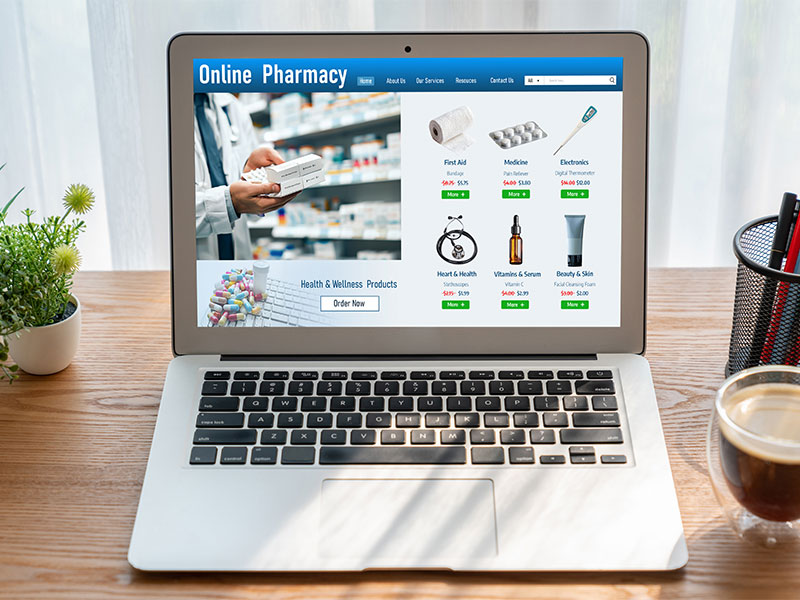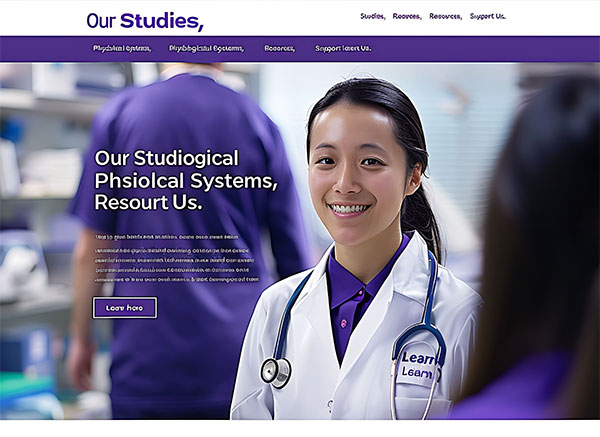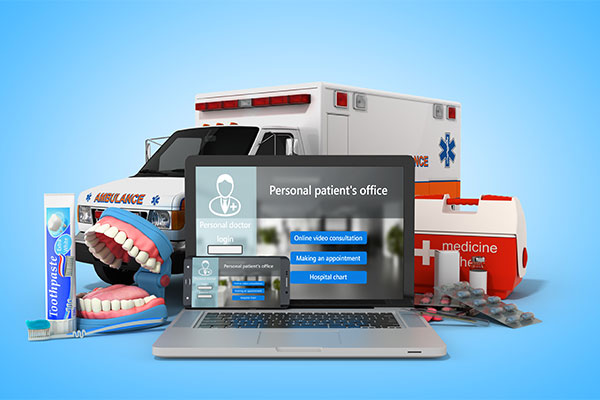
Whether you’re a small clinic or a large hospital network, ensuring that your website is both secure and legally compliant is essential. But how can you create a website that safeguards patient data while complying with stringent healthcare regulations? The answer lies in building a compliant website for medical practice that integrates advanced security measures, adheres to HIPAA guidelines, and employs best practices in web development.
This guide aims to provide you with a step-by-step walkthrough for designing and developing a secure, user-friendly, and legally compliant website. We’ll cover everything from understanding regulatory frameworks to implementing data protection strategies and conducting regular audits. As you read on, you’ll discover interactive checklists and actionable tips that make the process not only manageable but also highly effective.
The Importance of Security and Compliance in Healthcare Websites
Medical practices face unique challenges when it comes to managing patient information. With the increasing threat of cyberattacks and data breaches, protecting sensitive data has become a top priority. Here are some of the primary reasons why security and compliance should be at the forefront of your web development strategy:
- Protection of Patient Data: Healthcare websites handle a wealth of personal and sensitive information. Ensuring that data is encrypted, stored securely, and accessed only by authorized personnel is critical.
- Compliance with Regulations: In many regions, especially in the United States, medical websites must adhere to strict regulations such as the Health Insurance Portability and Accountability Act (HIPAA). Non-compliance can result in hefty fines and legal consequences.
- Building Patient Trust: A secure website reinforces patient confidence. When patients know that their information is safe, they are more likely to engage with your services.
- Mitigating Legal Risks: Data breaches can lead to lawsuits and regulatory penalties. A compliant website helps reduce these risks by ensuring all necessary legal protocols are followed.
- Enhancing Reputation: A secure and professionally designed website can elevate your practice’s reputation, setting you apart as a leader in healthcare technology.

Understanding the Regulatory Environment
Before embarking on the technical aspects of website development, it’s crucial to understand the regulatory environment governing healthcare data. Depending on your location and the scope of your practice, different rules may apply.
Key Regulations to Consider
- HIPAA (Health Insurance Portability and Accountability Act): In the United States, HIPAA sets the standard for protecting sensitive patient data. It mandates physical, technical, and administrative safeguards to ensure the confidentiality, integrity, and security of electronic protected health information (ePHI).
- GDPR (General Data Protection Regulation): If your practice caters to patients in the European Union, you must adhere to GDPR, which imposes strict rules on data protection and privacy.
- State and Local Regulations: In addition to federal laws, many states or countries have their regulations regarding data protection. Familiarize yourself with these guidelines to ensure full compliance.
Understanding these legal frameworks is the first step in designing a compliant website for medical practice. That not only meets regulatory standards but also fosters trust among your patient base.
HIPAA Compliance: What It Means for Your Website
HIPAA is arguably the most critical regulation for medical practices in the United States. A HIPAA-compliant website must ensure that all patient data is handled in a manner that protects privacy and security. Here’s what you need to consider:

Administrative Safeguards
- Risk Assessment: Conduct regular risk assessments to identify vulnerabilities in your website’s security. Document and address these risks accordingly.
- Employee Training: Ensure that all staff are well-versed in HIPAA protocols and understand the importance of safeguarding patient information.
- Policies and Procedures: Develop and maintain clear policies that outline how patient data is managed, stored, and transmitted.
Physical Safeguards
- Data Center Security: Ensure that your web hosting provider offers state-of-the-art security for their data centers, including restricted access and surveillance systems.
- Backup and Disaster Recovery: Implement regular data backups and have a disaster recovery plan in place to safeguard against data loss.
Technical Safeguards
- Encryption: Encrypt data both in transit and at rest. Use SSL/TLS protocols for secure communications.
- Access Controls: Implement robust authentication measures, such as two-factor authentication (2FA), to prevent unauthorized access.
- Audit Controls: Enable logging mechanisms to track access and modifications to sensitive data, which can be invaluable during a security audit.
By following these guidelines, you lay the groundwork for a website that is not only secure but also aligned with HIPAA requirements.
Looking to transform your healthcare website into a secure, robust, and fully compliant digital platform? Partner with the best web development company in India, which specializes in creating cutting-edge, secure, and user-friendly websites for medical practices. Let us help you build a compliant website for your medical practice that not only meets HIPAA requirements but also engages and protects your patients.

Data Protection Strategies
Data protection is a multifaceted challenge that requires both technological and administrative solutions. Here are some essential strategies to protect sensitive information on your website:
- Use Strong Encryption
Encryption is the cornerstone of data security. It ensures that even if data is intercepted, it remains unreadable without the proper decryption key. Implement industry-standard encryption protocols for:
- Data in Transit: Use HTTPS with SSL/TLS certificates to secure data exchanged between your website and its users.
- Data at Rest: Encrypt stored data on servers and backups to prevent unauthorized access.
- Implement Robust Access Controls
Limit access to sensitive data by using:
- Role-Based Access Control (RBAC): Assign access rights based on user roles within your organization.
- Two-Factor Authentication (2FA): Enhance login security by requiring an additional authentication factor.
- Regularly Update Software and Patches
Outdated software is one of the most common vulnerabilities exploited by hackers. Ensure that your web server, content management system (CMS), and any third-party plugins are kept up-to-date with the latest security patches.
- Use Firewalls and Intrusion Detection Systems
Firewalls serve as the first line of defense against cyber threats. An intrusion detection system (IDS) can alert you to potential breaches in real time, allowing for immediate response.
- Conduct Regular Security Audits
Perform comprehensive security audits to identify and remediate vulnerabilities. This should include:
- Penetration Testing: Hire cybersecurity experts to simulate attacks and identify weaknesses.
- Vulnerability Scanning: Use automated tools to scan your website for common vulnerabilities.
- Data Backup and Recovery Planning
A solid backup strategy is essential. Regularly back up your website data and store it in a secure, off-site location. Test your disaster recovery plan periodically to ensure that you can restore data quickly in case of an incident.

Website Development Best Practices for Medical Practices
When it comes to building a secure and compliant website for a medical practice, following best practices throughout the development lifecycle is crucial. Here’s a detailed roadmap:
- Planning and Requirement Analysis
- Define Objectives: Identify the primary goals of your website – whether it’s patient registration, appointment scheduling, telemedicine, or information dissemination.
- Understand Regulatory Requirements: Integrate legal requirements from the beginning to ensure that your design and functionality comply with HIPAA and other relevant laws.
- Create a Detailed Specification: Document all technical and functional requirements, including security protocols and compliance measures.
- Choosing the Right Technology Stack
- Secure Frameworks: Use modern frameworks that offer built-in security features. Frameworks like Django, Ruby on Rails, or ASP.NET provide robust security and are often used in healthcare applications.
- Scalable Infrastructure: Choose hosting solutions that can scale as your practice grows. Ensure that the infrastructure supports redundancy, load balancing, and disaster recovery.
- Content Management Systems (CMS): If you opt for a CMS, select one known for its security features and active community support, such as WordPress with robust security plugins.
- Designing with Security in Mind
User Interface (UI) and User Experience (UX): A well-designed interface should be both intuitive and secure. Avoid overcomplicating forms or navigation to prevent user errors that could lead to security vulnerabilities.
- Responsive Design: Ensure that your website is accessible on all devices without compromising security.
- Accessibility: Follow Web Content Accessibility Guidelines (WCAG) to make your website usable for all patients, including those with disabilities.
- Development and Coding Standards
Secure Coding Practices: Adopt secure coding guidelines to prevent vulnerabilities such as SQL injection, cross-site scripting (XSS), and cross-site request forgery (CSRF).
- Code Reviews: Implement regular code reviews and static analysis to catch security issues early in the development process.
- Version Control: Use version control systems like Git to manage changes and maintain code integrity over time.
- Testing and Quality Assurance
- Functional Testing: Ensure that all website features work as intended and meet the defined requirements.
- Security Testing: Conduct regular security tests, including vulnerability assessments and penetration tests.
- User Acceptance Testing (UAT): Engage with real users, including staff and patients, to gather feedback and ensure the website meets practical needs.
- Deployment and Maintenance
- Staging Environment: Use a staging environment to test changes before deploying them to your live website.
- Continuous Monitoring: Set up monitoring tools to track website performance, uptime, and security events.
- Regular Updates: Schedule regular maintenance updates and security patches to ensure the website remains secure over time.
Expand your digital footprint with our expert digital marketing services tailored specifically for pharmaceutical companies. Our strategic approach ensures that your brand reaches the right audience while complying with industry standards. Invest in our services today and watch your online presence grow as you establish a compliant website for medical practice that sets you apart in the healthcare industry.
Best Practices Checklist for a Secure and Compliant Healthcare Website
Below is an interactive checklist that you can use as a guide when developing your website. This checklist covers every major aspect of security and compliance:

Security and Compliance Checklist
- Regulatory Compliance:
- Verify adherence to HIPAA requirements (administrative, physical, and technical safeguards)
- Ensure compliance with GDPR if serving EU patients.
- Check local and state-specific data protection regulations.
2. Data Protection:
- Use HTTPS with SSL/TLS certificates for all data transmissions.
- Encrypt sensitive data at rest and in transit
- Implement regular data backup procedures.
- Store backups securely off-site
3. Access Controls:
- Enforce role-based access control (RBAC)
- Set up two-factor authentication (2FA) for all administrative access.
- Utilize strong password policies and regular password updates
4. Network and Infrastructure Security:
- Deploy web application firewalls (WAFs)
- Install intrusion detection/prevention systems (IDS/IPS)
- Regularly update and patch server software and applications.
5. Software and Code Security:
- Adopt secure coding practices to mitigate vulnerabilities (e.g., SQL injection, XSS, CSRF)
- Perform regular code reviews and security audits.
- Utilize automated vulnerability scanning tools.
6. User Privacy:
- Display privacy policies and terms of service.
- Ensure patient consent for data collection where required.
- Maintain audit logs to track data access and modifications.
7. Training and Awareness:
- Train staff on data protection and HIPAA compliance
- Develop an incident response plan for potential data breaches.
- Conduct regular security training sessions.
8. Monitoring and Maintenance:
- Set up continuous monitoring for suspicious activity.
- Schedule periodic security audits and penetration tests.
- Ensure a clear process for deploying updates and patches.
Using this checklist as a living document throughout the development lifecycle will help you ensure that your website remains secure, reliable, and compliant over time.
Technical Aspects of Website Security
Beyond policy and process, the technical configuration of your website plays a critical role in ensuring security and compliance. Here are some key technical aspects to consider:
- Secure Hosting and Infrastructure
Choose a Reputable Hosting Provider: Look for a host with a proven track record in security, redundant backups, and a secure data center environment.
- Server Configuration: Harden your server by disabling unnecessary services, closing unused ports, and using secure configurations.
- DDoS Protection: Implement measures to mitigate distributed denial-of-service (DDoS) attacks, ensuring that your website remains accessible during high traffic surges.
- Application-Level Security
Content Management System (CMS) Security: If using a CMS, install security plugins and regularly update the platform to address vulnerabilities.
- Input Validation: Implement rigorous input validation on all forms and user inputs to prevent injection attacks.
- Session Management: Use secure session management practices, including proper session expiration and cookie security settings.
- Database Security
- Database Encryption: Encrypt sensitive data stored in your databases.
- Access Controls: Restrict database access to only necessary applications and personnel.
- Regular Backups: Automate backups and securely store them to minimize data loss risk.
- Secure API Integration
- API Authentication: Use robust API authentication methods, such as OAuth, to protect data exchanges.
- Rate Limiting: Implement rate limiting on API endpoints to prevent abuse and DDoS attacks.
- Data Sanitization: Always sanitize API inputs to prevent malicious code injection.
User Experience, Accessibility, and Interaction
While security and compliance are paramount, your website must also provide an engaging and user-friendly experience. This balance is essential for both patient satisfaction and operational efficiency.
- Intuitive Navigation
- Clear Menus and Structure: Design your website layout so that visitors can quickly find important information such as services offered, appointment scheduling, and contact details.
- Search Functionality: Integrate a robust search function to help users locate specific content easily.
- Accessibility Compliance
- Adherence to WCAG Guidelines: Ensure that your website complies with Web Content Accessibility Guidelines (WCAG) to provide an inclusive experience for users with disabilities.
- Alt Text and Descriptive Labels: Use alternative text for images and clear labels for interactive elements to improve accessibility.
- Engaging Content and Interactive Elements
- Interactive Checklists: Utilize interactive checklists (like the one above) and quizzes to engage users and reinforce important security practices.
- Multimedia Integration: Include videos, infographics, and animations to explain complex concepts such as HIPAA compliance and data encryption.
- Feedback Forms: Provide easy-to-use feedback forms for patients to report issues or suggest improvements, ensuring continuous website optimization.
Ongoing Monitoring, Auditing, and Maintenance
Creating a secure and compliant website is not a one-time project—it’s an ongoing commitment. Regular monitoring, auditing, and maintenance are necessary to keep up with evolving threats and regulatory changes.
- Continuous Monitoring
- Real-Time Alerts: Set up systems that notify you immediately if any unusual or suspicious activity is detected.
- Performance Metrics: Monitor website performance and security logs to identify potential issues before they escalate.
- Scheduled Audits and Penetration Testing
- Routine Audits: Conduct security audits at least annually (or more frequently if needed) to ensure that all security measures are functioning correctly.
- Third-Party Penetration Tests: Engage independent cybersecurity experts to perform penetration testing and validate your security posture.
- Incident Response and Disaster Recovery
- Response Plan: Develop and regularly update an incident response plan that outlines the steps to take in the event of a security breach.
- Disaster Recovery: Maintain a detailed disaster recovery plan that ensures rapid restoration of services and minimal disruption to patient care.
Visit: how digital marketing improves patient management
Real-World Case Studies and Lessons Learned
Learning from real-world examples can help you avoid common pitfalls and understand what works best in the context of medical practice. Here are a few case studies and examples:
Case Study 1: A Small Clinic’s Digital Transformation
A small clinic recently undertook a digital transformation by developing a new website that prioritized patient data security and HIPAA compliance. By conducting thorough risk assessments, integrating robust encryption protocols, and training their staff, the clinic saw an increase in patient engagement and a reduction in security incidents. This transformation not only boosted patient confidence but also positioned the clinic as a leader in digital healthcare.
Case Study 2: A Hospital Network’s Journey to Compliance
A large hospital network faced challenges with legacy systems that were not compliant with modern security standards. They embarked on a comprehensive overhaul of their online systems, which included migrating to secure cloud-based hosting, implementing advanced access controls, and scheduling regular penetration tests. The result was a significant improvement in data security and compliance, enabling the network to serve a broader patient base without compromising on safety.
Conclusion
Building a secure and compliant website for medical practices is a multifaceted challenge that requires a deep understanding of both technical security measures and the regulatory landscape. By integrating robust data protection strategies, adhering to HIPAA and other legal requirements, and continuously monitoring and updating your website, you can create a digital platform that not only safeguards patient information but also fosters trust and confidence.
Remember, creating a compliant website for a medical practice isn’t just about ticking regulatory boxes—it’s about establishing a secure and reliable environment that patients can rely on. With careful planning, regular audits, and a commitment to continuous improvement, your practice can thrive in the digital age while protecting the very essence of healthcare: patient trust and confidentiality.
By following the best practices outlined in this guide and utilizing the interactive checklists and resources provided, you’re well on your way to developing a website that stands as a benchmark for security, compliance, and excellent patient service.
Share Your Project Requirements With Us






